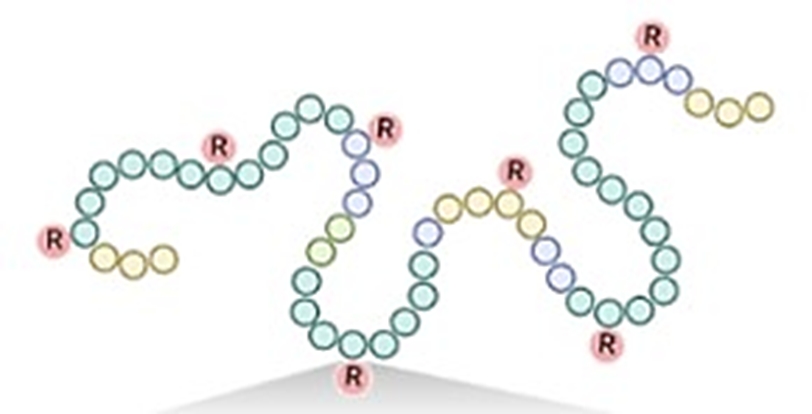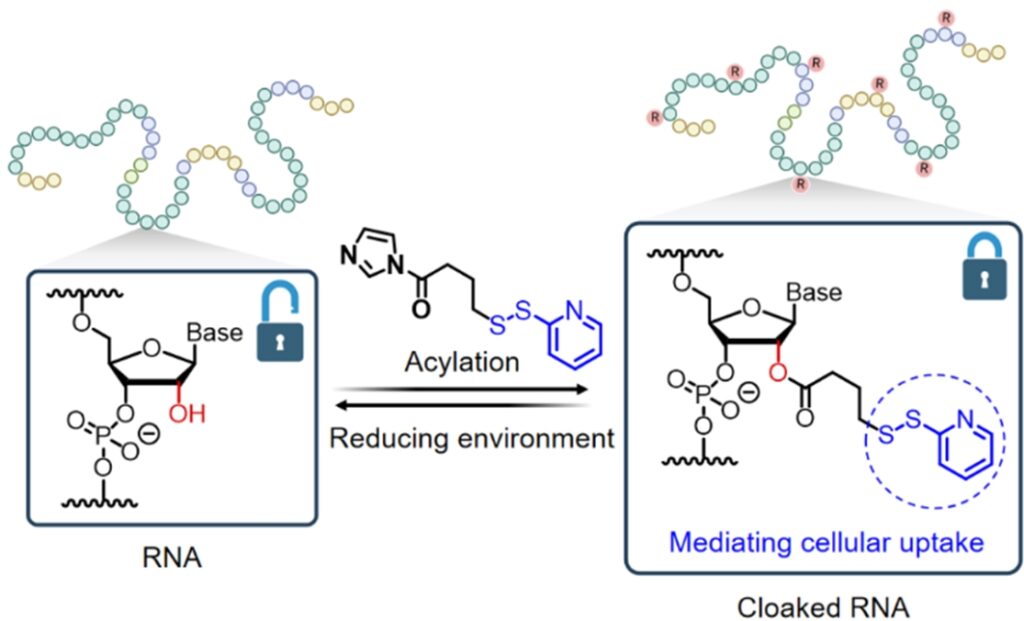
A research team led by Assistant Professor ZHU Ru-Yi, from the Department of Chemistry at NUS have developed a strategy using disulfide-containing small molecules to facilitate the reversible control and delivery of ribonucleic acid (RNA). This method takes advantage of a chemical process called post-synthetic RNA acylation chemistry, and combined it with dynamic disulfide exchange reaction for RNA delivery and reversible control. This method provides a way to mask the RNA molecule, and researchers can potentially regulate its activity and delivery until it reaches its target site within the cell.
Prof Zhu said, “Our studies showcase the first example of RNA delivery into cells using only small molecules. The simplicity of our method for modifying RNA and the unique delivery mechanism will undoubtedly attract more researchers to adopt and improve the method. We believe that our work will facilitate numerous applications in the field of RNA biology and biomedicines. Looking ahead, the research team is actively designing new strategies to modify RNA and improve RNA-based therapeutics.
The research findings were published in the journal Angewandte Chemie International Edition. Read the full article here.

Schematic showing the development of a new strategy for ribonucleic acid (RNA) delivery and reversible control. This method involves modifying the RNA with the addition of a disulfide bond that prevents it from interacting with cellular machinery. When introduced into a cellular environment with reducing agents, this modification is reversed, allowing the RNA to exert its desired effect. [Credit: Angewandte Chemie International Edition]
